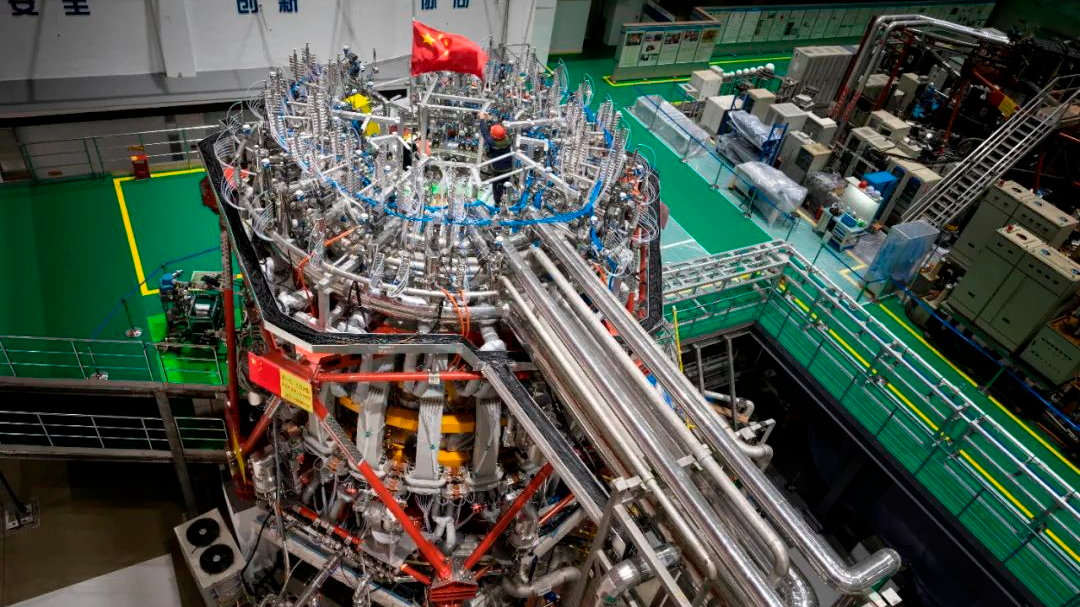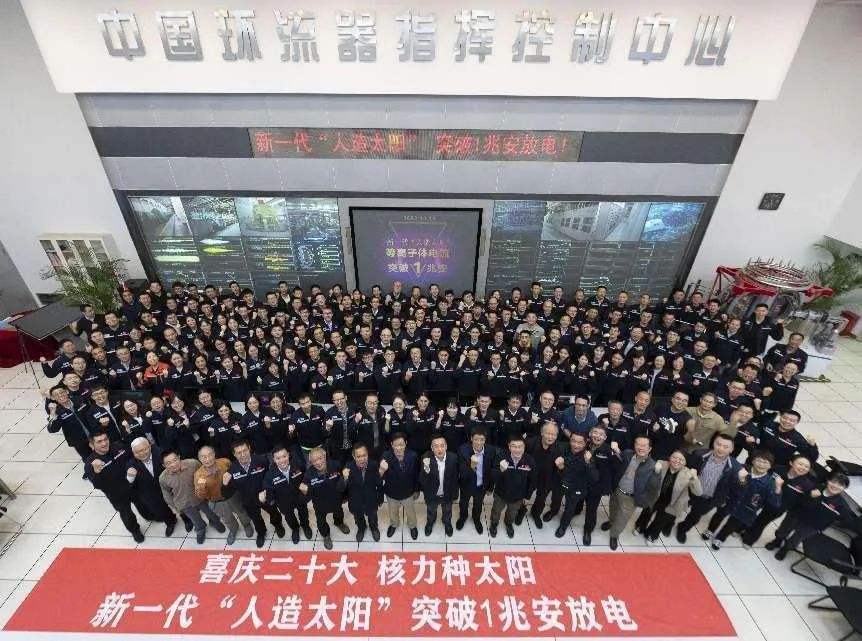
China's new-generation "artificial sun," the HL-2M Tokamak. /CNNC
China's new-generation "artificial sun," the HL-2M Tokamak. /CNNC
With its plasma current exceeding one million amperes, the HL-2M Tokamak, China's new-generation "artificial sun," set a new record in the country on Wednesday for the operation of a controlled nuclear fusion device, according to the China National Nuclear Corporation (CNNC).
The plasma current is a core parameter of tokamak fusion reactor. A plasma current of one million amperes is necessary for nuclear fusion, said the CNNC.
"The breakthrough marks an important step towards fusion ignition in nuclear fusion research and development in China," said Zhong Wulv, deputy director of the Center for Fusion Science under the Southwestern Institute of Physics affiliated to CNNC and head of the HL-2M experiment, at an interview with the Science and Technology Daily.
The HL-2M Tokamak, the country's largest in scale and highest in parameters, went into operation and achieved its first plasma discharge in December 2020.

Researchers celebrate as the plasma current of China's new-generation "artificial sun" exceeded 1 million amperes. /CNNC
Researchers celebrate as the plasma current of China's new-generation "artificial sun" exceeded 1 million amperes. /CNNC
What is an 'artificial sun'?
The nuclear fusion process that is occurring inside the core of the sun constitutes its energy in both heat and light. Fusion energy is considered to be an ideal "ultimate energy" for mankind due to its abundant resources and inherent safety.
Scientists in the world have been working to achieve controlled nuclear fusion reaction for decades, and the fusion experimental device is known as the "artificial sun."
The experimental advanced superconducting tokamak (EAST), or the Chinese "artificial sun," in Hefei City, east China's Anhui Province, started operation in 2016. It achieved a continuous high-temperature plasma operation for 1,056 seconds in December 2021, the longest duration of its kind in the world at that time, according to a report by Xinhua News Agency.
The ultimate goal of EAST is to create nuclear fusion, using deuterium abound in the sea to provide a steady stream of clean energy, according to the Institute of Plasma Physics of the Chinese Academy of Sciences.
Read More:
China commissions new-generation 'artificial sun'
China's 'artificial sun' sets new world record